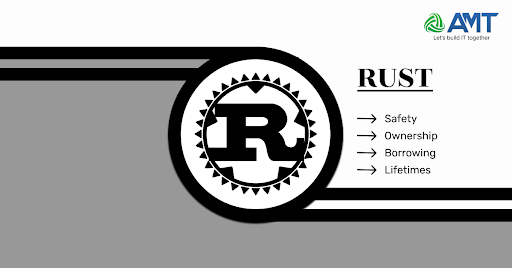Rust is a systems programming language known for its focus on safety, performance, and concurrency. It was first released in 2010 by Mozilla Research and has gained popularity in recent years for its unique features and benefits. Here are some key aspects of Rust:
- Safety: Rust’s most prominent feature is its emphasis on memory safety. It achieves this through a combination of features such as ownership, borrowing, and lifetimes. These features ensure that memory is managed correctly, preventing common issues like null pointer dereferences, data races, and buffer overflows.
- Ownership: Rust uses a system of ownership, where each value in the language has a single “owner” responsible for cleaning up the value when it’s no longer needed. This system helps eliminate many memory-related bugs and allows for efficient resource management.
- Borrowing: To avoid unnecessary copying of data, Rust introduces the concept of borrowing, which allows functions to temporarily access a value without taking ownership of it. Borrowing can be mutable (for modifying data) or immutable (for reading data), and it helps prevent data races.
- Lifetimes: Lifetimes are a part of Rust’s type system that helps ensure that references to data remain valid. They help prevent dangling references and are essential for writing safe and correct code.
- Concurrency: Rust provides built-in support for concurrent programming, with features like threads and asynchronous programming. The ownership and borrowing system helps prevent data races, making it easier to write safe concurrent code.
- Performance: Rust is designed to be a systems programming language, and it offers low-level control over system resources. It has minimal runtime overhead and is often compared to C and C++ in terms of performance.
- Ecosystem: Rust has a growing and active ecosystem of libraries and tools. The package manager, Cargo, makes it easy to manage dependencies and build projects. The Rust community is known for its helpfulness and the quality of documentation.
- Cross-Platform: Rust supports cross-platform development and can be used to target a wide range of platforms, from embedded systems to web applications.
- Open Source: Rust is open-source and has a permissive license (MIT/Apache 2.0), making it accessible for developers to use and contribute to.
- WebAssembly (Wasm): Rust has become popular for writing code that compiles to WebAssembly, allowing for high-performance, secure, and portable code execution in web browsers.
Rust has gained traction in various domains, including systems programming, game development, web development, and more, thanks to its strong focus on safety and performance. It continues to evolve, with regular updates and improvements to the language and its ecosystem.
Here are some additional key features and aspects of the Rust programming language:
- Pattern Matching: Rust has a powerful pattern matching system, similar to languages like Haskell and Scala. This feature is called “match” and is used for deconstructing complex data structures and handling different cases in a concise and readable way.
- Error Handling: Rust has a robust and expressive error handling system based on the
ResultandOptiontypes. This allows developers to handle errors gracefully and provides a clear and explicit way to propagate and handle errors throughout the codebase. - Macros: Rust has a macro system that enables metaprogramming. Macros allow developers to write code that generates other code during compilation. This feature is used extensively in the Rust ecosystem to create reusable abstractions and reduce boilerplate code.
- Traits and Generics: Rust uses a trait system for defining and implementing shared behavior across types, similar to interfaces in other languages. Generics allow developers to write reusable and flexible code by creating functions and data structures that work with a variety of types.
- Functional Programming: Rust supports functional programming paradigms with features like closures, iterators, and functional combinators, making it suitable for functional-style programming.
- Foreign Function Interface (FFI): Rust provides a straightforward way to interface with code written in other languages, such as C and C++. This is essential for integrating Rust code into existing projects and ecosystems.
- Safety without a Garbage Collector: Rust’s memory safety and ownership model eliminate many common memory-related bugs without the need for a garbage collector, resulting in predictable and efficient memory usage.
- Tooling: Rust has a rich set of development tools, including the Cargo package manager, which simplifies project management, dependency tracking, and building. The Rust compiler itself, called rustc, is known for its informative error messages.
- Community: Rust has a strong and vibrant community of developers who are active in forums, mailing lists, and various online communities. The Rust community is known for its inclusive and welcoming nature.
- Cross-Domain Use Cases: Rust is versatile and can be used in a wide range of application domains, including systems programming, game development (e.g., using the Amethyst game engine), embedded systems, web development (e.g., with frameworks like Rocket and Actix), and more.
- Growing Adoption: Many prominent companies and projects are adopting Rust for various purposes, including Mozilla (which originally developed Rust), Dropbox, AWS, Microsoft, and more.
Rust’s combination of safety, performance, and modern language features makes it a compelling choice for developers seeking a reliable and efficient language for a variety of software development tasks. It continues to evolve and gain popularity in the software development community.
Watch this space for more updates on the latest trends in Technology.
